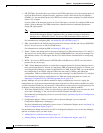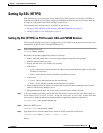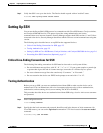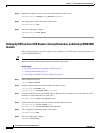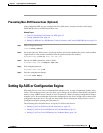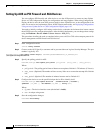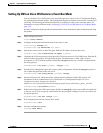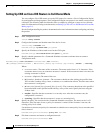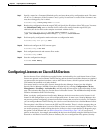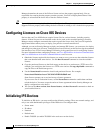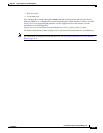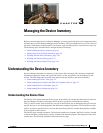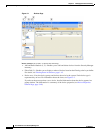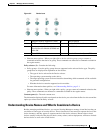
2-10
User Guide for Cisco Security Manager 4.4
OL-28826-01
Chapter 2 Preparing Devices for Management
Setting Up AUS or Configuration Engine
Setting Up CNS on Cisco IOS Routers in Call-Home Mode
You can configure Cisco IOS routers to use the CNS protocol to contact a Cisco Configuration Engine
for configuration and image updates. The Configuration Engine can operate in two modes, event-bus and
call-home. The following table describes the tasks to complete to configure a router to use call-home
mode. For information on using event-bus mode, see Setting Up CNS on Cisco IOS Routers in Event-Bus
Mode, page 2-9.
See the Configuration Engine product documentation for more information about configuring and using
the product.
Step 1 Enter configuration mode.
router# config terminal
Step 2 Configure the hostname and domain name if the device is new.
router(config)# hostname name
hostname(config)# ip domain-name your_domain
Step 3 Specify the IP address of the trusted server for the CNS agent.
hostname(config)# cns trusted-server all-agents ip_address
Step 4 Specify schedule parameters for a Command Scheduler occurrence and enter kron-occurrence
configuration mode.
hostname(config)# kron occurrence occurrence-name [user username ]
{in [[numdays:]numhours:]nummin | at hours:min [[month] day-of-month] [day-of-week]} {oneshot | recurring}
Where:
• occurrence-name—The name of the occurrence. The name can be from 1 to 31 characters. If the
occurrence-name is new, an occurrence structure is created. If the occurrence-name is not new, the
existing occurrence is edited.
• username—(Optional) The name of the user.
• in [[numdays:]numhours:]nummin—The occurrence should run after waiting the specified time.
You can enter a number of days, hours, or minutes, or a combination of them. The timer starts when
the occurrence is configured.
• at hours:min [[month] day-of-month] [day-of-week]—The occurrence should run at the specified
hour and minute on the specified month and day, or day of the week. Specify the hour using the
24-hour clock.
• oneshot—Specifies that the occurrence is to run only once. After the occurrence runs, the
configuration is removed.
• recurring—Specifies that the occurrence is to run on a recurring basis.
Step 5 Specify the policy list associated with a Command Scheduler occurrence. The name can be 1 to 31
characters. If the list-name is new, a policy list structure is created. If the list-name is not new, the
existing policy list is edited.
Use the kron occurrence and policy-list commands to schedule one or more policy lists to run at the same
time or interval.
hostname(config-kron-occurrence)# policy-list list-name
Step 6 Exit kron-occurrence and return to configuration mode.
hostname(config-kron-occurrence)# exit



